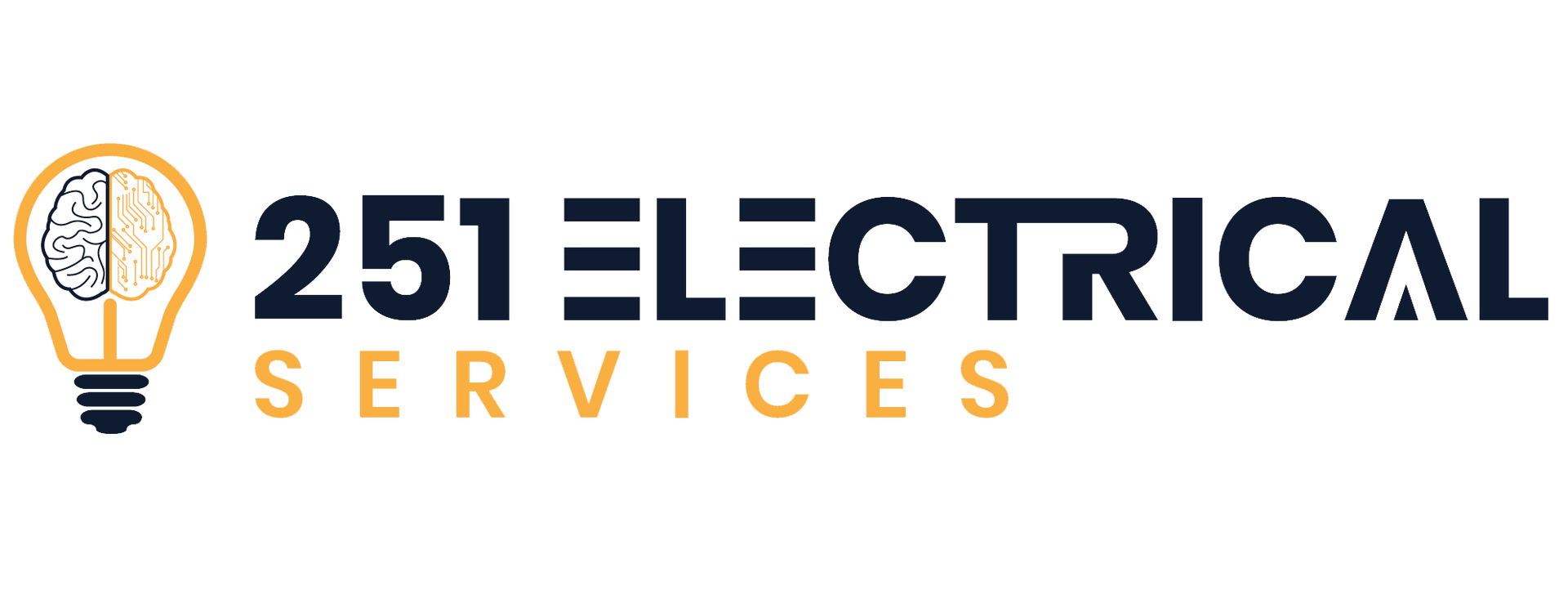Residential Electrical Services
Baldwin and Mobile Counties, AL
Emergency Service
Problems Found Within an Hour
Work and Labor Warranties
Hours:
Request Call Back
Hero Request Form
Thank you for contacting us.
We will get back to you as soon as possible.
Please try again later.
Elevate Your Electrical System With Expert Services
251 Electrical Services LLC is your trusted partner for all residential electrical needs in Baldwin County and Mobile County, AL. Our comprehensive range of services covers everything from minor repairs to major upgrades, ensuring your home's electrical system is safe, efficient, and up-to-date.
We specialize in:
- Upgrades and remodels
- New construction wiring
- Troubleshooting and repairs
- Swimming pool electrical installations
- Surge protection systems
- Electrical for home additions
With 10 years of experience and a 100% commitment to customer satisfaction, 251 Electric is ready to tackle your electrical projects. Call or text us for expert residential electrical solutions.
Recognize the Signs of Residential Electrical Issues
Keeping your home's electrical system in top shape is crucial for safety and efficiency. Here are some indicators that it's time to call 251 Electric:
- Frequent circuit breaker trips
- Flickering or dimming lights
- Outdated wiring in older homes
- Planning a home renovation or addition
- Need for more outlets or updated fixtures
- Concerns about electrical safety
If you've noticed any of these signs, don't hesitate to contact 251 Electric. We're here to assess your needs and provide expert solutions.
Why Professional Electrical Services Are Important
Making sure your home's electrical system is properly maintained and updated is essential for safety, efficiency, and peace of mind. Here's why you should trust 251 Electric for your residential electrical needs:
- Prevent potential fire hazards
- Improve energy efficiency
- Increase your home's value
- Ensure code compliance
- Accommodate modern technology demands
- Enhance overall home safety
Don't compromise on your home's electrical system. Contact 251 Electric for professional, reliable residential electrical services.
Enjoy the Advantages 251 Electric Offers
When you choose 251 Electric, you're opting for quality, reliability, and exceptional customer care. Our commitment to excellence is evident in every aspect of what we do:
- Emergency service available
- Problem identification within the first hour
- Comprehensive work explanations
- Warrantied labor and work
- Up-to-date certifications
- 10% veteran discount
Get in touch with us for your residential electrical needs and see why we're the preferred choice in Baldwin and Mobile counties AL.
Contact Us for Complete Residential Electrical Services
Your home deserves the best in electrical care, and 251 Electric is here to deliver. With our locally owned, family-operated business, you'll receive personalized attention and expert solutions tailored to your needs. From quick repairs to complete electrical overhauls, we're equipped to handle it all.
Don't wait for electrical issues to escalate - contact 251 Electric today and ensure your home's electrical system is in capable hands.
- Bullet text
- Bullet text
- Bullet text
- Bullet text
- Bullet text
- Bullet text
- Bullet text
- Bullet text
- Bullet text
- Bullet text
Title or Question
Describe the item or answer the question so that site visitors who are interested get more information. You can emphasize this text with bullets, italics or bold, and add links.Title or Question
Describe the item or answer the question so that site visitors who are interested get more information. You can emphasize this text with bullets, italics or bold, and add links.Title or Question
Describe the item or answer the question so that site visitors who are interested get more information. You can emphasize this text with bullets, italics or bold, and add links.
Gallery Heading H2

251 Electric proudly offers a 10% discount to all veterans.
Call or Text Us to Claim Your Discount
Not valid with any other offers or promotions. Restrictions apply. Must mention this coupon at the time of scheduling.
Reviews

Emergency Electrical Service
Electrical problems don't wait for business hours. We're always ready to tackle urgent electrical issues.
Call or Text Now



